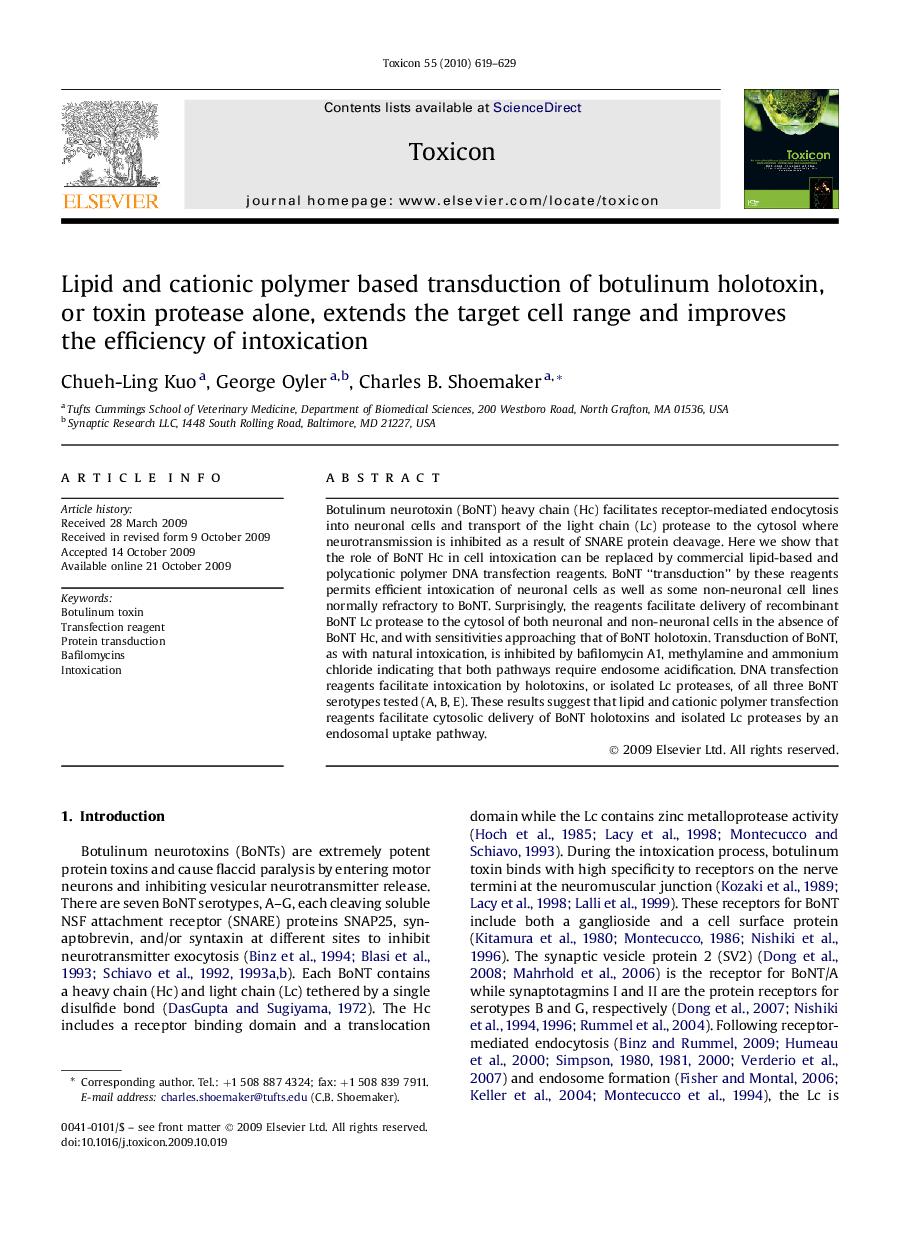| کد مقاله | کد نشریه | سال انتشار | مقاله انگلیسی | نسخه تمام متن |
|---|---|---|---|---|
| 2065362 | 1544179 | 2010 | 11 صفحه PDF | دانلود رایگان |

Botulinum neurotoxin (BoNT) heavy chain (Hc) facilitates receptor-mediated endocytosis into neuronal cells and transport of the light chain (Lc) protease to the cytosol where neurotransmission is inhibited as a result of SNARE protein cleavage. Here we show that the role of BoNT Hc in cell intoxication can be replaced by commercial lipid-based and polycationic polymer DNA transfection reagents. BoNT “transduction” by these reagents permits efficient intoxication of neuronal cells as well as some non-neuronal cell lines normally refractory to BoNT. Surprisingly, the reagents facilitate delivery of recombinant BoNT Lc protease to the cytosol of both neuronal and non-neuronal cells in the absence of BoNT Hc, and with sensitivities approaching that of BoNT holotoxin. Transduction of BoNT, as with natural intoxication, is inhibited by bafilomycin A1, methylamine and ammonium chloride indicating that both pathways require endosome acidification. DNA transfection reagents facilitate intoxication by holotoxins, or isolated Lc proteases, of all three BoNT serotypes tested (A, B, E). These results suggest that lipid and cationic polymer transfection reagents facilitate cytosolic delivery of BoNT holotoxins and isolated Lc proteases by an endosomal uptake pathway.
Journal: Toxicon - Volume 55, Issues 2–3, February–March 2010, Pages 619–629